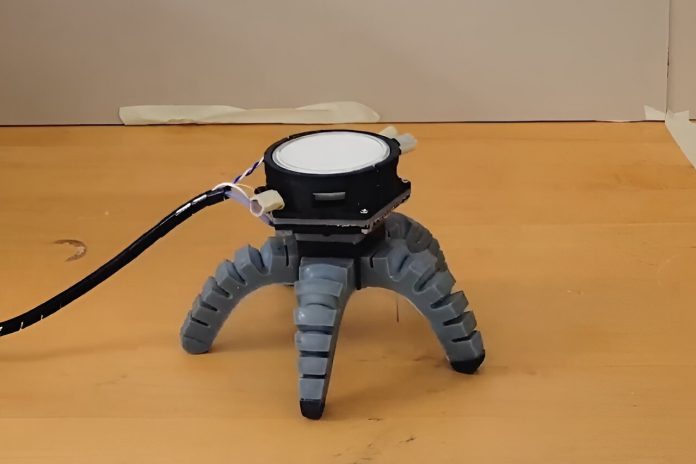
Imagine a robot that can respond to its environment using the electrical impulses from mushrooms.
It might sound like science fiction, but researchers at Cornell University have made it a reality.
By tapping into the natural signals of fungal mycelia—the underground part of mushrooms—they’ve created “biohybrid” robots that can react to their surroundings more effectively than purely synthetic machines.
Their findings were published in the journal Science Robotics.
Building a robot usually requires advanced technical skills and specialized materials. But in this groundbreaking work, researchers turned to an unlikely source: the forest floor.
The team, led by Rob Shepherd, a professor of mechanical and aerospace engineering at Cornell, discovered that mycelia, which are typically found in the ground, can send electrical signals.
These signals can be used to control robots, opening up new possibilities for how machines interact with the world around them.
“This is the first time we’ve used fungi to provide environmental sensing and control signals to robots,” Shepherd said.
“By growing mycelium into the robot’s electronics, we were able to make the biohybrid machine sense and respond to changes in its environment. In this study, we used light as a trigger, but in the future, it could be chemicals.
For example, robots could one day sense soil conditions in crops and determine when to add fertilizer, helping to reduce harmful environmental effects.”
In designing robots, engineers often look to nature for inspiration. Machines that mimic how animals move, sense their surroundings, or regulate their internal temperature have already been developed.
Some have even incorporated living tissues, like muscle cells, but keeping these complex biological systems alive and functional is a challenge.
Mycelia offer a unique advantage. They can grow in harsh conditions and have the ability to sense and respond to a variety of environmental signals, making them ideal for integrating into robots.
“If you think about a synthetic system, it’s usually designed for one purpose,” said Anand Mishra, a research associate in the Organic Robotics Lab and lead author of the study.
“But living systems, like mycelia, respond to many different inputs, such as touch, light, and heat. This makes them ideal for robots that need to operate in unpredictable environments.”
Creating robots powered by mushrooms, however, requires a diverse set of skills. Mishra worked with experts in mechanical engineering, electronics, mycology (the study of fungi), neurobiology, and signal processing to bring this project to life.
He learned how to grow clean mycelia cultures and record their electrical signals, which are similar to those found in neurons.
The team built two biohybrid robots: one shaped like a spider and another with wheels. These robots were able to walk, roll, and even change their movements in response to the mycelia’s signals. When exposed to ultraviolet light, the robots adjusted their gait, demonstrating the mycelia’s ability to sense and respond to environmental changes.
“This project isn’t just about controlling a robot,” Mishra explained. “It’s about creating a real connection with a living system. By listening to the signals from the mycelia, we can understand what’s happening in its environment. The robot then makes these invisible signals visible through its movements.”
The research team included experts from various fields, highlighting the collaborative nature of this innovative project. With this breakthrough, the future of robotics might include more natural components, leading to machines that are more adaptable and responsive to the world around them.



